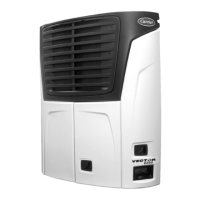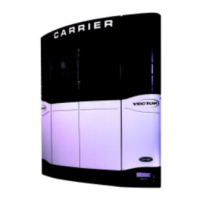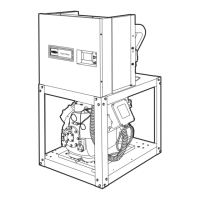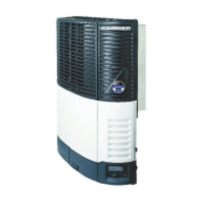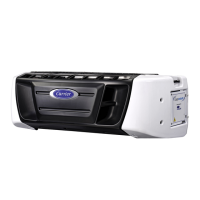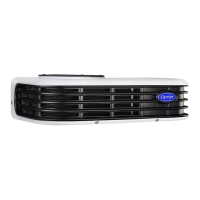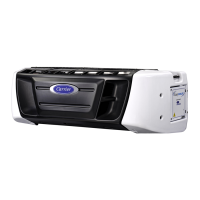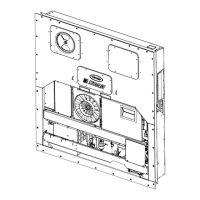62-61753-21
17 HIGH COMP DISCHARGE TEMP
TRIGGER-ON:
"Check Compressor Discharge Sensor" alarm not active (if so, refer to alarm 125 first) and:
discharge temp rises above 140.6°C (285.1°F) for 30 seconds, or
Discharge temp rises above 146.1°C (295.0°F).
UNIT CONTROL: Engine operation: Shutdown and alarm.
Standby operation: refrigeration system shutdown and alarm with PSCON
still energized.
RESET CONDITION: Auto Reset after 15 minutes when discharge temp falls below 130.0°C (266°F)
or
alarm may be manually reset via Keypad or by turning the unit off, then back on again.
NOTE: Follow the steps below until a problem is found. Once a repair or correction has been made, the active
alarm should clear itself (refer to reset condition above). Operate the unit through the appropriate modes to see if
any active alarm occurs. Continue with the steps below as necessary.
Check Airflow Through Radiator / Condenser Coil
a. Inspect condenser / radiator fins.
Fins must be straight. 90% or more of the coil surface
must be undamaged. No "dead" air spaces. Condenser
/ Radiator coil must be clean (refer to Section 8.6.3).
Even airflow through the entire coil. No "dead" spots.
c. Check condenser fan rotation /
operation.
Fans should operate correctly. Air should be drawn in
through the grill, and directed into the engine com-
partment.
a. Clear Active Alarm list, then run
Pretrip & check for any new
alarms.
Any active alarms must be corrected and cleared be-
fore proceeding.
Check For Low Refrigerant Charge
a. Check refrigerant level in the re-
ceiver.
Generally, level should be between upper & lower sight
glasses with a refrigerated compartment temperature
of 1.0°C (35°F) or lower. refer to Section 8.5.4
a. Install Manifold Test Set and check
and compare compressor dis-
charge & suction pressures with
those shown on the microproces-
sor display.
Suction & Discharge Pressures must have the same
reading on gauges & on microprocessor display.
Pressures must be in the normal range for ambient &
refrigerated compartment temperature conditions.
NOTE: Microprocessor suction (CSP) and evaporator
(EVOP) pressure readings have a maximum value of
100 psig (7.5 bar) The actual suction pressure must be
lower than 100 psig in order to perform this test.
a. Check compressor for excessive
vibration or noise
Check System For Non-Condensables
a. Check refrigeration system for
non-condensable gas(es).
No non-condensable gas(es) may be present. (Refer to
Section 8.5.5.)
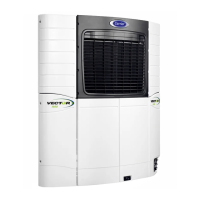
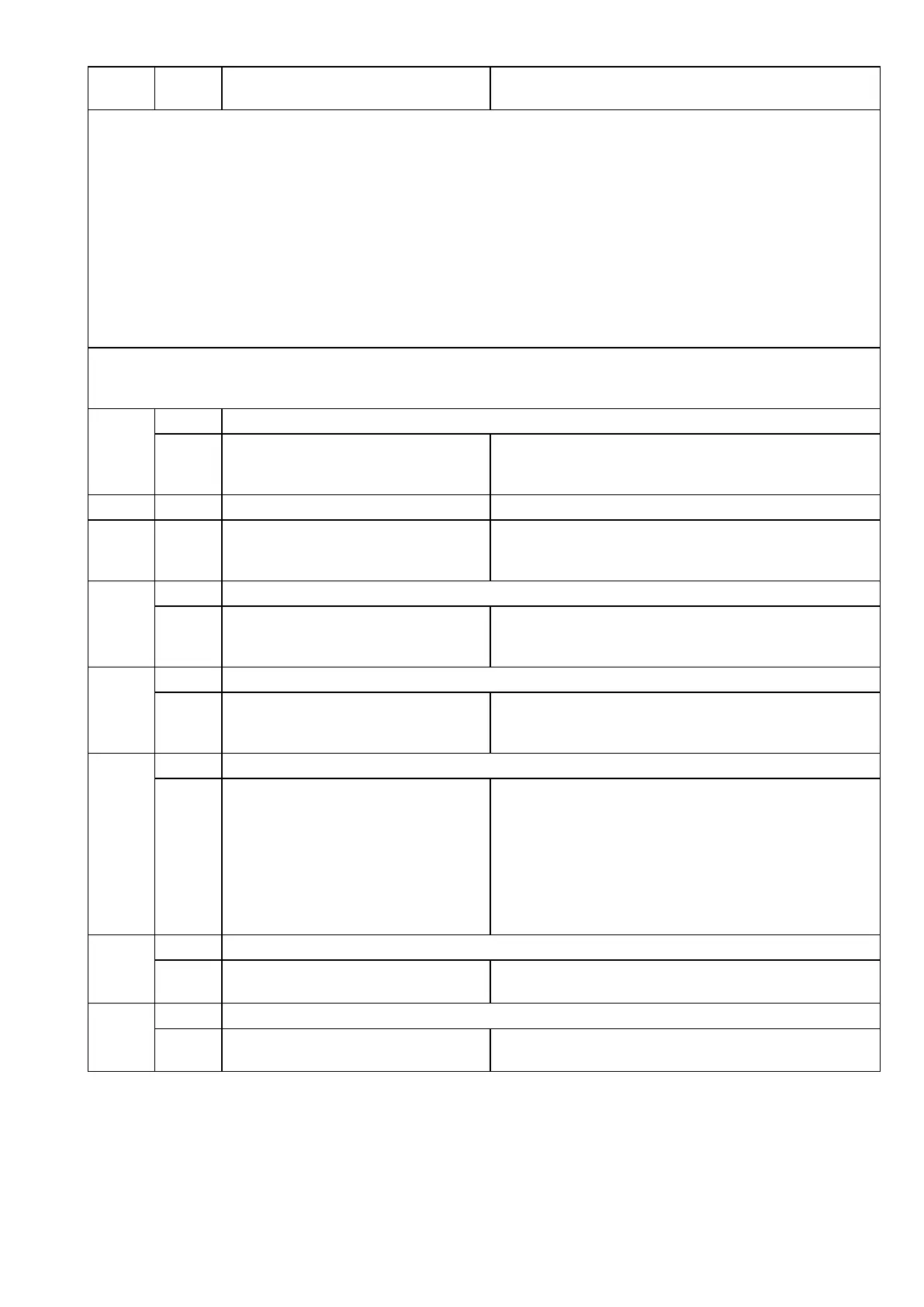